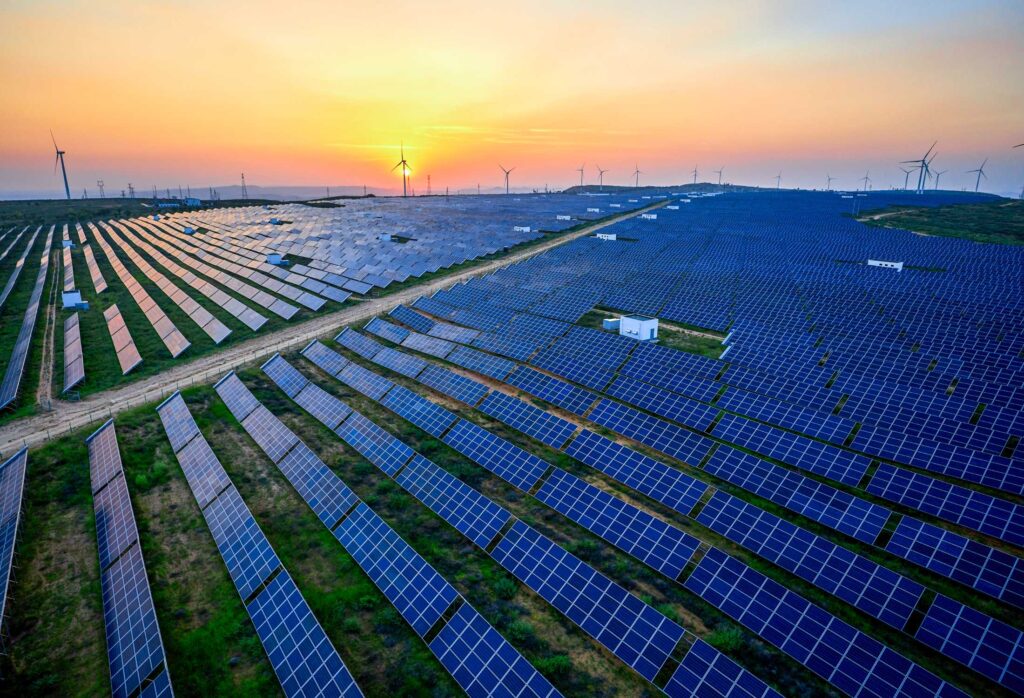Mais buscados:
Energy
Residential
Business
Renew Energy

When we talk about electrical energy, we are referring to a fundamental resource for homes, businesses, industry and agribusiness. Consumption of this resource tends to be high and, precisely because of this, it is so important to find ways to achieve sustainability through different types of clean energy.
The first step is to understand what these sources of clean energy are and how to use them, so that companies can enjoy a cheaper electricity bill and the planet can benefit from lower emissions. Continue reading the post and learn more about clean energy!
If you don’t know what clean energy is, it’s important to keep in mind that it is a type of energy generated from sources that do not emit CO2 or CO. Together with other gases, carbon dioxide and carbon monoxide raise the planet’s temperature, causing climate change.
In other words, clean energy avoids emitting carbon into the atmosphere and helps combat climate change.
Now that you know what clean energy is, now is a good time to check out the main sources. Here are a few of them.
For starters, it is important to understand that there are two types of energy generators: PCH (Small Hydroelectric Power Plant) and UHE (Hydroelectric Power Plant). PCHs are smaller in size and, thus, have a smaller reservoir and a lower environmental impact. UHEs, on the other hand, have a greater production capacity but a much higher installation cost and environmental impact.
Hydropower comes from the movement of water. As we live in a country with abundant water resources, it is quite common in Brazil. Its rationale is the same as wind energy: the mechanical force caused by the movement of water generates electricity through turbines specifically designed for this purpose.
One of the main advantages of hydro power is its powerful energy performance, which makes its cost-benefit very competitive in the market. In addition, hydro power plants have an average lifespan of 50 to 100 years, making them an attractive investment for current and future generations.
Their updating is considered easy while maintenance and operating costs are low. At the same time, they promote the construction of roads, businesses and industries in many regions, bringing electricity even to the remotest areas.
Solar energy has become quite popular in recent years. It’s no wonder, since this resource is available in all parts of the planet and in abundance. Electricity is generated from sun rays — a smart solution, even for urban public lighting.
One of the main advantages of this type of energy is its very low maintenance cost — which reduces the cost of this resource for the population. The high availability of solar energy is also an important benefit, as it is possible to store the electricity generated.
Wind energy uses wind as input, another inexhaustible resource that does not generate any type of pollution. In this case, propellers capture the force of the winds, making turbines function and transforming mechanical energy into electrical energy.
A wind energy system can be installed anywhere with good wind potential, which means that energy generators can rent space or lease land from rural landowners, providing them an additional source of income. At the same time, rural producers can continue using their land.
Wind energy generation is developing rapidly, and new technologies are making it increasingly more efficient. As a result, people get to enjoy cheaper and, certainly, more sustainable electrical energy.
This electricity is produced from the force of tides — a highly vast resource along Brazil’s entire coastline. Energy is generated through hydraulic turbines installed in the ocean that transform mechanical energy into electrical energy.
The risks to nature are minimal, that is, it has a low environmental impact and requires very little maintenance. As the volume of seawater is huge, this input is abundantly available, which is another important advantage.
Biofuels are also an important type of clean energy. They are produced with organic matter of plant or animal origin. Sugarcane is one of the most notorious examples in Brazil and abroad.
Biofuels are excellent substitutes for fossil fuel systems. They do not produce carbon and have a wide array of applications, using solid waste and reducing material waste by generating heat through steam turbines.
Now that you know the main types of clean energy, it is important to know how to contract them.
Today, most of the electricity is supplied through the Captive Market, with tariffs defined by the government and from sources that are not always sustainable.
The goal of opening up this market is so that consumers — individuals and businesses — can choose their energy supplier based on proposals presented, with no minimum consumption obligation. This way, in addition to the companies that can already contract from the Free Energy Market, the entire population will be able to access a vast, sustainable and cheaper energy matrix than what is offered today.
Clean energy makes it possible to access infinite, worry-free energy. Calculate your savings with Serena and have energy to prosper every day.

Receive the latest news from Serena and the energy market!
